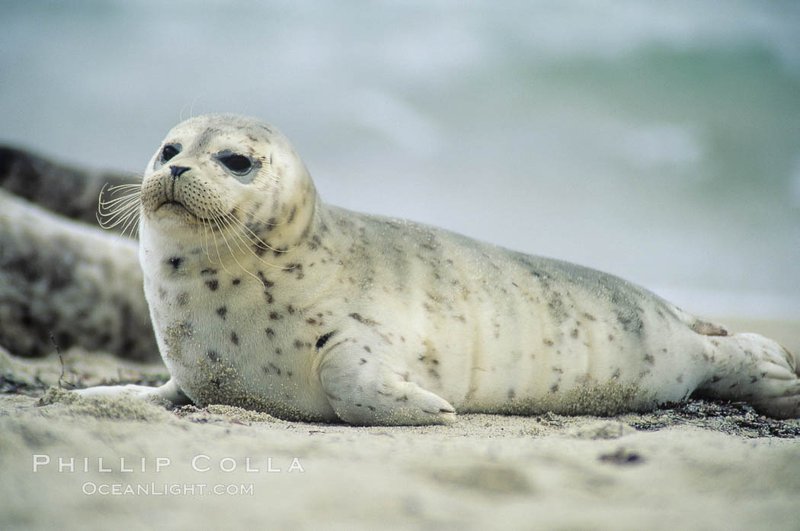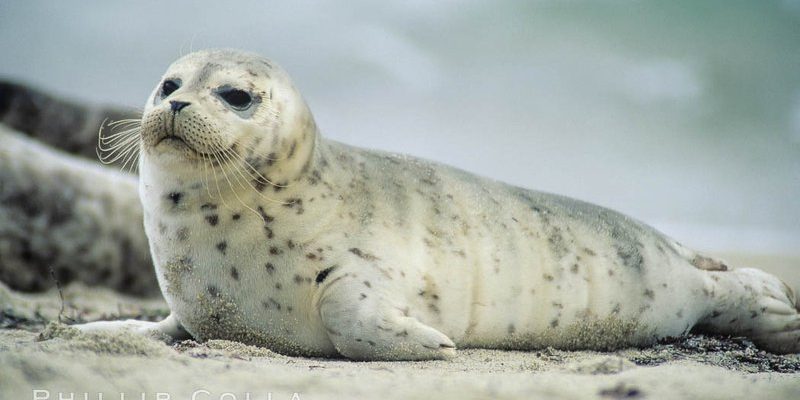
When you picture a harbor seal, you might imagine it basking in the sun, its sleek body glistening in the water. But there’s so much more happening beneath the surface! Harbor seals contribute to the marine food web and can even act as indicators of the ocean’s health. So, why should you care about these furry friends? Let’s dive into the fascinating world of harbor seals and explore their crucial role in marine ecosystems.
Harbor Seals: An Overview
Before we delve deeper into the harbor seal’s role in the ecosystem, let’s start with the basics. Harbor seals, or *Phoca vitulina*, are commonly found along the coastlines of the Northern Hemisphere. They have a distinct spotted coat that helps them blend into their surroundings, which is essential for avoiding predators.
These seals are typically about six feet long, weighing between 100 and 300 pounds. They are known for their curious nature, often popping their heads above the water to observe their surroundings. One interesting tidbit: they can hold their breath for up to 30 minutes while diving for food. Pretty impressive, right?
Harbor seals primarily feast on fish, squid, and crustaceans. This diet makes them an integral part of the marine food pyramid. By consuming various fish species, they help maintain a balance among marine life. If their population decreases, it could lead to an overabundance of certain fish, which can disrupt the entire ecosystem.
The Predator-Prey Relationship
Let’s get into the heart of the matter: the predator-prey relationships harbor seals share with other marine animals. As predators, they play a pivotal role in regulating fish populations. For example, if harbor seals consume too many juvenile fish, it may affect future fish stocks and, in turn, impact the fishing industry.
On the flip side, harbor seals also have their share of predators. Great white sharks, orcas, and even sea lions may hunt them. This balance of predator and prey is essential for a thriving ecosystem. Here’s the thing: when one species is affected, it creates a ripple effect. If harbor seals thrive, they help control fish populations. But if their numbers dwindle due to overfishing or habitat loss, the entire food web can be thrown out of sync.
Maintaining this balance is critical for ocean health. Marine ecosystems are delicate. The interactions between species, like harbor seals and their prey, highlight just how interconnected life in the ocean really is.
Indicators of Ocean Health
Harbor seals aren’t just important for their role as predators; they also serve as indicators of the ocean’s health. Scientists often study seal populations to gauge the overall well-being of marine ecosystems. If seal numbers are dwindling, it could signal problems like pollution, food scarcity, or habitat degradation.
For instance, a decline in seals might point to an increase in toxins in their food sources. Seals can accumulate pollutants in their bodies, which can then be passed up the food chain to humans and other animals. Monitoring their health helps researchers understand broader environmental changes and challenges.
Think of harbor seals as nature’s little canaries in the coal mine. If they’re thriving, it often means that their environment is too. If they’re struggling, it’s time to pay attention and take action.
The Impact on Local Economies
You might be surprised to learn that harbor seals also contribute to local economies. Coastal tourism often thrives on wildlife watching, and these seals attract visitors eager to see them in their natural habitat. Kayaking, eco-tours, and marine park visits generate revenue for communities that rely on a healthy marine environment.
However, managing seal populations can be tricky. Local fishermen sometimes feel that seals compete with them for fish, leading to tension between conservation efforts and local economies. Here’s where education comes into play. Understanding how harbor seals impact the ecosystem can help people see the bigger picture.
Promoting coexistence is crucial. By educating the public about the importance of harbor seals, communities can find ways to balance economic interests with environmental stewardship.
Conservation Efforts for Harbor Seals
Conservation efforts are essential for ensuring the survival of harbor seals and their ecosystems. National parks and marine protected areas offer safe habitats where seals can breed, rest, and feed without excessive human interference. These protected areas often result in healthier marine ecosystems, benefiting numerous species.
Additionally, organizations focus on habitat restoration and pollution control. Reducing plastic waste and other pollutants can significantly improve the conditions in which harbor seals and other marine life thrive.
It’s also vital to engage local communities in conservation. When people understand the importance of harbor seals, they are more likely to support efforts to protect them. Community initiatives, beach clean-ups, and educational programs can all contribute to a healthier environment for these seals and the ecosystems they inhabit.
Harbor seals may seem like just another cute animal sunbathing on the rocks, but their role in marine ecosystems is profound. They are key players in maintaining balance and health in our oceans. By keeping fish populations in check, serving as indicators of environmental health, and contributing to local economies, these creatures remind us of the interconnectedness of all life.
So, the next time you see a harbor seal lounging by the sea, remember that there’s much more to their story. Our oceans depend on them—and so do we. By protecting harbor seals, we help safeguard the delicate balance of marine ecosystems and, in turn, our planet’s health. Let’s cherish and protect these incredible animals and the ecosystems they support.

